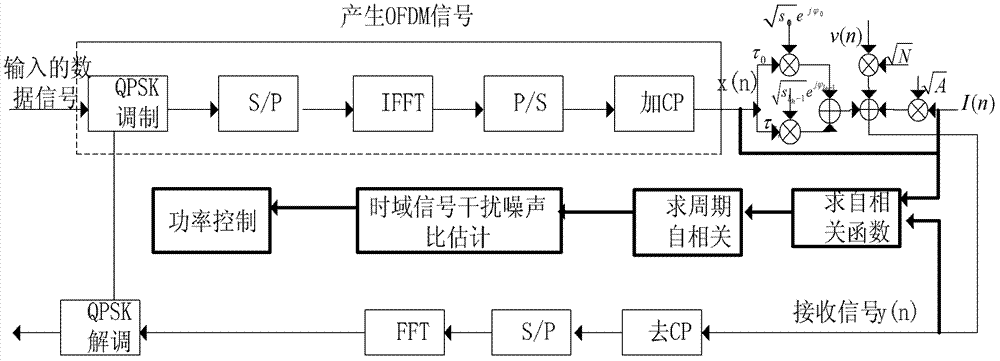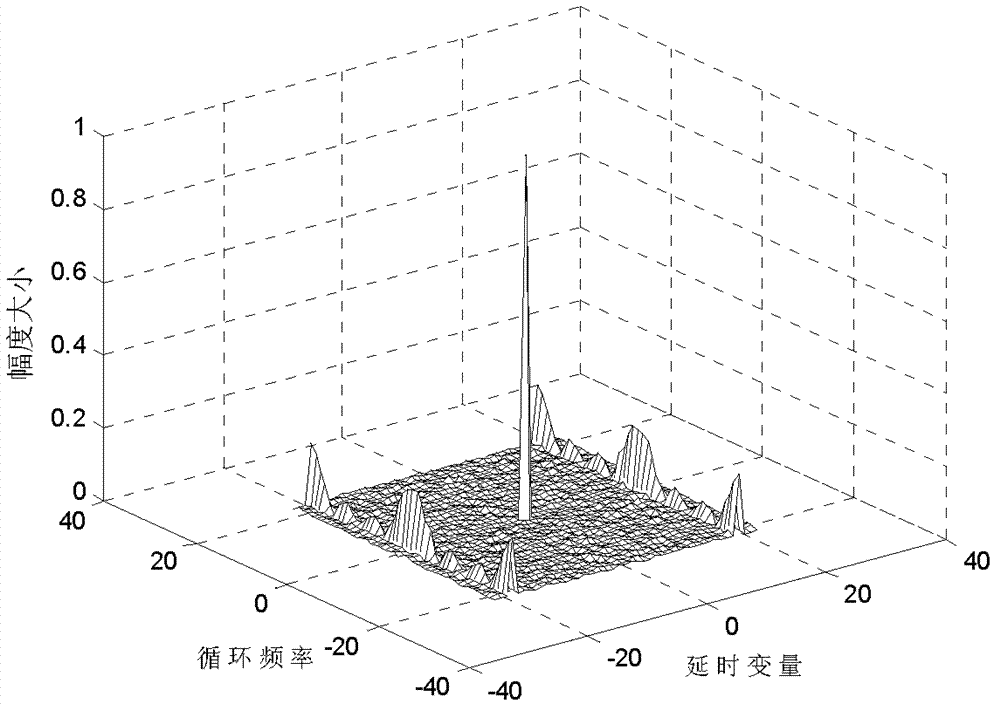Interference-to-noise ratio evaluation method of blind single of orthogonal frequency division multiplexing (OFDM) system under pulse interference environment
A technique of interference-to-noise ratio and pulse-to-interference, which is applied in the field of blind signal-to-interference-to-noise ratio estimation, can solve the problems of high computational complexity and long estimation time
- Summary
- Abstract
- Description
- Claims
- Application Information
AI Technical Summary
Problems solved by technology
Method used
Image
Examples
Embodiment Construction
[0023] The present invention will be further described in detail below in conjunction with the accompanying drawings and embodiments.
[0024]The present invention utilizes the cyclostationary characteristics of OFDM signals and the energy distribution characteristics of the periodic autocorrelation function of pulse interference, and proposes a blind signal-to-interference-noise ratio estimation method for OFDM systems under pulse interference environments, which obtains the periodic autocorrelation of received signals Function, analyze OFDM signal, pulse interference signal and energy distribution diagram of periodic autocorrelation function of Gaussian white noise, select appropriate delay variable and cycle frequency to effectively separate signal power and interference plus noise power, so as to estimate blind signal interference Noise ratio, the specific steps are as follows:
[0025] ① The OFDM system block diagram in the pulse interference environment is as follows: f...
PUM
 Login to View More
Login to View More Abstract
Description
Claims
Application Information
 Login to View More
Login to View More - R&D
- Intellectual Property
- Life Sciences
- Materials
- Tech Scout
- Unparalleled Data Quality
- Higher Quality Content
- 60% Fewer Hallucinations
Browse by: Latest US Patents, China's latest patents, Technical Efficacy Thesaurus, Application Domain, Technology Topic, Popular Technical Reports.
© 2025 PatSnap. All rights reserved.Legal|Privacy policy|Modern Slavery Act Transparency Statement|Sitemap|About US| Contact US: help@patsnap.com



